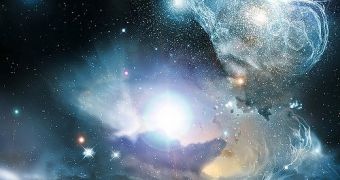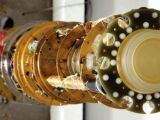What better way to understand the universe than to create your very own? Of course, black holes, supernova explosions and Big Bangs are off limits for laboratories on Earth, but helium-3 cooled to only 17,7 degrees Celsius above absolute zero will do just as good in replicating the processes that took place soon after the Big Bang event, leading to the rapid expansion of the universe in space-time and ultimately to the creation of galaxies, stars, planets and so on.
Suppose that Lancaster University researchers created a universe in a volume of space smaller than a marble. The biggest problem in cosmology today is inflation. Nobody can explain why and how it happened, but it is certain that at some point in time the universe grew exponentially in size at speeds higher than that of light. Accelerating the expansion of the universe at such high speeds in a time less than a few fractions of a second would have taken a tremendous amount of energy. And then there is the problem of stopping this sudden expansion as fast as it took place.
A black hole would represent a pretty good analogy for the initial Big Bang singularity, although large-scale experiments would have to be postponed for now, in favor of smaller ones. String theory proposes that everything in the universe is made up of tiny vibrating strings, located in high-dimensional spaces called branes. Our universe for example is believed to be a 3-brane one inside a four-dimensional bulk containing other universes as well. Theoretically, the Big Bang event may have been produced by a collision between our 3-brane universe and another one, which would explain the massive amount of energy released during inflation and why it ended so fast.
In their experiment, Lancaster researchers cooled helium-3 to only 17.7 degrees Celsius above absolute zero to replicate certain homogeneous and symmetric properties of matter in the early universe. Albeit, when the matter in the universe cooled, certain symmetries started disappearing forming defects in space-time. Cooled helium experiences superfluidity, creating two possible orientations, the "A phase" and the "B phase". When separating the two phases in two others, the interfaces between the A and B phase can be approximated as branes, which lose symmetry while being smashed together.
Additionally, string theory predicts that the collision of two branes could produce cosmic strings, one-dimensional defects in the matter of space-time, measuring only several kilometers in length and possessing massive gravitational fields. The cosmic strings could have determined the smooth universe to clump into separate masses of matter we now see as galaxy clusters. The Lancaster experiment shows that cosmic strings may have indeed been responsible for the processes taking place in the outcome of the brane collision.
"What we have done is to show that an analogue system with a similar underlying mathematical language behaves in a certain way", says Richard Haley, part of the Lancaster research team.
Nevertheless, there's no certainty that quantum analogues can provide proof that what happens in theory also happened in reality, but physicists studying inflation continue to push the boundaries to understanding the secrets of the universe, even if experiments get more and more difficult, or sometimes impossible. When this happens, analogue systems present the best way of checking if the theory makes any sense in everyday life.

 14 DAY TRIAL //
14 DAY TRIAL // 
